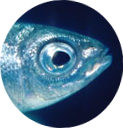package bogue
Install
dune-project
Dependency
Authors
Maintainers
Sources
md5=991bc2e85df38feb23bddf84addd758d
sha512=8b777f7b479946528626c4112bf45600bee9aed0d94742e3eed0659f9a0517e41d0eaf398299920fd5b9f86065bd0e24035662d2df36f24f6a044c78e61dee01
Description
Bogue is an all-purpose GUI library for ocaml, with animations, based on SDL2.
This library can be used for games or for adding GUI elements to any ocaml program.
It uses the SDL2 renderer library, which makes it quite fast.
It is themable, and does not try to look like your desktop. Instead, it will look the same on every platform.
Graphics output is scalable, and hence easily adapts to Hi-DPI displays.
Programming with bogue is easy if you're used to GUIs with widgets, layouts, callbacks, and of course it has a functional flavor. It uses Threads when non-blocking reactions are needed.
README
Bogue 
Bogue is an all-purpose GUI (Graphical user interface) library for ocaml, with animations, written from scratch in ocaml, based on SDL2.
- Can be used to add interactivity to any program.
- Can work within an already existing event loop, for instance to add GUI elements to a game.
- Uses GPU acceleration (thanks to the SDL2 renderer library), which makes it quite fast.
- Can deal with several windows.
- Bogue is themable, and does not try to look like your desktop. Instead, it will look the same on every platform.
- Graphics output is scalable (without need to recompile), and hence easily adapts to Hi-DPI displays.
- Predefined animations (slide-in, fade-in, fade-out, rotate).
- Built-in audio mixer.
- Works with mouse, touchscreen, and even TAB focusing
- Internationalization mechanism
Programming with bogue is easy if you're used to GUIs with widgets, layouts, callbacks, and of course it has a functional flavor. It uses Threads when non-blocking reactions are needed.
Hello world
open Bogue
let () =
Widget.label "Hello world"
|> Layout.resident
|> Bogue.of_layout
|> Bogue.runFeatures
Widgets
Widgets are the building bricks, responsible for graphic elements that respond to events (mouse, touchscreen, keyboard, etc.).
For a more "functional" use, they can be "connected" instead of reacting with callbacks (see examples).
- boxes with decorations (round corner, border, shadow, gradient background, image pattern)
- check box
- push button (with labels or images)
- rich text display (bold, italics, underline), any TTF font can be used.
- image (all usual formats, including SVG)
- slider (horizontal, vertical, or circular)
- text input with select and copy-paste
- SDL area for free drawing with the whole SDL Renderer API
Layouts
widgets can be combined in various ways into layouts. For instance, a check box followed by a text label is a common layout.
Several predefined layouts are available:
- sliders (horizontal, vertical, circular). Can be used as progress bars
- scrollable lists (that can easily handle a large number of elements, like one million)
- multi-column tables with sortable columns
- multiple tabs with slide-in animation
- modal popups
- various menus (menu bar, drop down menus with submenus)
- drop-down select lists
- radio lists
- automatic tooltips can be attached to any element
- file chooser
Layouts can be animated (slide-in, transparency, rotation). All layouts can be automatically resized when the user resizes the window. Timeouts are available to execute arbitrary actions after a delay.
Screenshots
demo, tab1 | demo, tab2 |
|---|---|
 |  |
See here for the source code of this demo.
Videos
Installation
Using the opam package
It's the easiest way unless you want to try out the development version.
opam install bogueThat's it. But, if you want to stay in sync with the latest developement, you can directly "pin" the github repository:
opam pin add https://github.com/sanette/bogue.git(Then update/upgrade opam). And this can easily be undone with
opam unpin https://github.com/sanette/bogue.gitSDL2 troubleshooting
Bogue needs the SDL2 library. In general you already have it installed, or, if everything goes smoothly, it will be installed automatically with opam install tsdl. However, tsdl is not able to automatically pick up the right version corresponding to your SDL2 version. You might have to tell opam the version you need: for instance for Bogue 20240928 on Ubuntu 20.04 you should opam install tsdl.1.0.0, because the more recent tsdl.1.1.0 requires SDL >= 2.0.18 which you probably don't have on your system.
See https://github.com/dbuenzli/tsdl/blob/master/CHANGES.md
Building from sources
Prerequisites
You need a working ocaml installation with opam, see the ocaml doc. Then, make sure you have dune, tsdl, tsdl-image and tsdl-ttf:
opam install dune tsdl tsdl-image tsdl-ttfGet the latest source
Download the git archive, unzip it, cd into the bogue-master dir, and then:
dune build
opam install .CI
https://ci.ocamllabs.io/github/sanette/bogue
Documentation
It's good to first have a look at Bogue's general principles.
You can also directly try the tutorials.
The public API can be found here.
Examples
You should first try a minimal example.
The examples directory contains more sophisticated examples. If you installed the bogue package with opam (as described above), these examples are available via the boguex program. For instance, run examples 34 and 41 by:
boguex 34 41Type boguex -h to have the list of all examples.
A minimal app using Bogue
See here.